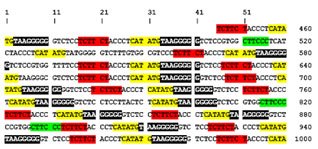Ecotoxicology
Molecular physiology and environmental toxicology
In addition to acute and mostly unintentional pollutant releases of localized character, effects of pollutant mixtures in the low concentration range and in combination with other stress factors (hypoxia, osmotic stress, etc.) are becoming increasingly important. For example, the role of so-called metallothioneins (which are cysteine-rich and low molecular weight metal-binding proteins) in metal detoxification and stress management in soil animals and in fish larvae is being investigated in our research group. Remarkably, the metallothionein genes of these organisms contain accumulations of regulatory elements in their promoter and intron regions to which different transcription factors bind that play essential roles in stress coping. We would like to determine whether and how different stressors (from heavy metals to osmotic stress) individually and in combination control and modulate the expression of these stress proteins and their physiological roles (Fig. 1).Another focus of our environmental toxicology research are questions dealing with microevolutionary phenomena of adaptation of species and populations to pollutants (pesticides) under simultaneous exposure to ecological and anthropogenic stress factors (e.g. global warming). For example, we have demonstrated that the globally distributed apple pest Cydia pomonella (the codling moth) has successfully split into numerous, small-scale, single-gene populations under selective pressure from pesticide applications in the Alpine region. These populations are not only highly adaptable, but also able to successfully defy any chemical and biological control measures. Thanks to this human-induced adaptability, codling moth has become one of the world's most dangerous pests of cultivated fruit (Fig. 2).

Abb. 1: Ausschnitt aus einer Intron-Kassette („Stress-Kassette“) mit repetitiven Erkennungssequenzen für die Bindung von Stress-relevanten Transkriptionsfaktoren im Cadmium-Metallothionein-Gen der Weinbergschnecke (Helix pomatia) (aus Dallinger 2007; Egg et al. 2008).

Abb. 2: Mittels AFLP-Analyse erstellter Populations-Stammbaum (Neighbour-Joning) des Apfelwicklers (Cydia pomonella) in Mittel-Europa mit Nachweis der Aufsplitterung in kleinräumig eingenischte, vielfach Pestizid-resistente Populationen (aus Thaler et al. 2008).
Members of this working group
- Reinhard Dallinger (Leiter)
- Reinhard Lackner
- Michael Niederwanger
- Veronika Pedrini-Martha
- Raimund Schnegg

